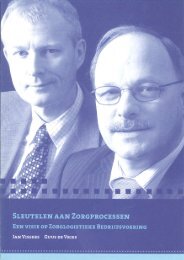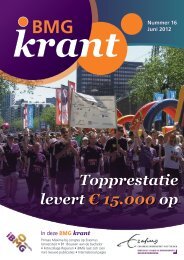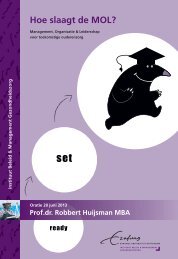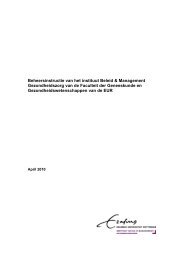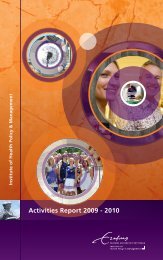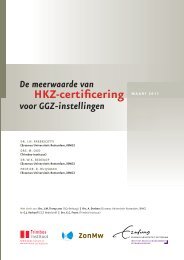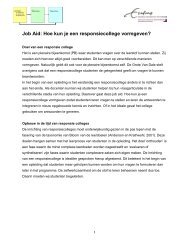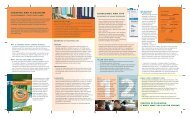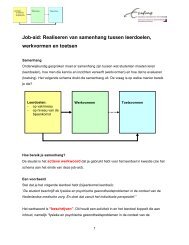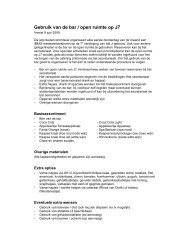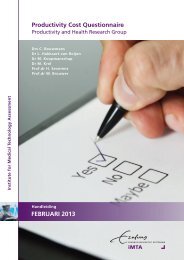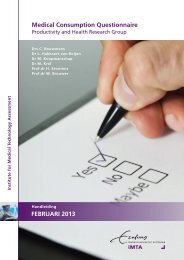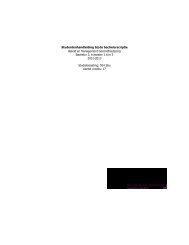Marten J. Poley - Erasmus Universiteit Rotterdam
Marten J. Poley - Erasmus Universiteit Rotterdam
Marten J. Poley - Erasmus Universiteit Rotterdam
- No tags were found...
You also want an ePaper? Increase the reach of your titles
YUMPU automatically turns print PDFs into web optimized ePapers that Google loves.
26Chapter 2Table 2.4 Mean Indirect Medical Costs of One Treatment for ARMCosts of hospital admissions € 9,180Costs of consultations with a specialist € 1,194Costs of consultations with a general practitioner - € 542Costs of consultations with a physiotherapist - € 118Costs of aids for defecation and diapers € 11,818Total costs up to the age of 45 € 21,532Total costs up to the age of 45, discounted € 7,791EffectsLife expectancy. Of the 473 traced patients, 54 (11%) patients had died with amean life span of 1.4 years (median, 23 days). We assumed that the survivorswill have a normal life expectancy of 75.4 years. Accordingly, the mean lifeexpectancy of the ARM patients amounts to 67.0 years.Health state description. The analysis of the disease-specific questionnaireproves that ARM patients suffer stool difficulties. Dirty pants, lack of urgesensation, inability to recognize the type of defecation, inability to holddefecation, and urinary incontinence are problems that are reported morefrequently in ARM patients than in the general population. Furthermore, ARMpatients more often use aids for defecation and diapers. This results in a highersymptom score for ARM patients (mean score, 3.5) than for the control group(mean score, 1.4). As a consequence of these stool difficulties, social and sexualproblems also are more frequently reported in ARM patients than in the generalpopulation.It appears from the medical consumption questionnaire that ARM patients, inchildhood as well as in adulthood, are more often admitted to a hospital, moreoften consult with a specialist (not during hospitalization), and more often receivemedication. However, ARM patients consult with a general practitioner lessfrequently than the general population.Health state valuation. Patients from 5 to 15 years scored 0.89 and adultsscored 0.88 on the EQ-5D index. Both values are significantly lower than thereference scores for the general population (0.93 both in adults 22 and inchildren 23 ). The mean quality of life of all patients is 0.88. Given the lifeexpectancy of 67.0 years, treating ARM produces 59.0 (67.0 x 0.88) QALYs,whereas 'no treatment' produces 16.7 QALYs (50% of patients live to 67.0 yearswith a quality of life of 0.5). Treatment for ARM compared with 'no treatment'thus results in a gain of 42.2 QALYs. When discounted at 5% per year, the QALYgain is 12.7.




